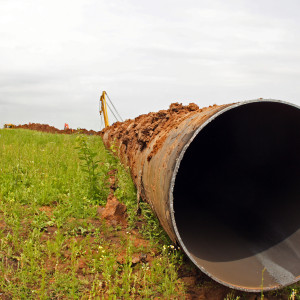In a move that angered both pipeline proponents and bipartisan members of the U.S. government, a decision to allow Keystone XL to be built was once again delayed on Friday, April 18.
Phase IV of the Keystone Pipeline system, known as Keystone XL, was proposed in 2008 and has been the subject of much dissension ever since. There is debate amongst environmentalists, the oil industry, and economists about its purpose and the climate ramifications that this project will incur. Proponents insist the project will strengthen our economy, create jobs, help limit railcar accidents, and ensure energy independence for the United States. Opponents believe that this oil will instead travel by ship to areas like China, create only minimal jobs, and turn the pipeline into a major environmental catastrophe.
What isn’t disputable is the significant gain in bipartisan support to allow Keystone XL to be built. A growing number of Democrats have been putting pressure on the Obama administration to give the go-ahead for the pipeline. Which raises the question, why have there been multiple delays in allowing its production?
The midterm elections are coming up in the fall of 2014, and the timing of this delay is suspicious at best. Sen. Mary Landrieu, D-La. stated:
Today’s decision by the Administration amounts to nothing short of an indefinite delay of the Keystone Pipeline. This decision is irresponsible, unnecessary and unacceptable. By making it clear that they will not move the process forward until there is a resolution in a lawsuit in Nebraska, the administration is sending a signal that the small minority who oppose the pipeline can tie up the process in court forever. There are 42,000 jobs, $20 billion in economic activity and North America’s energy security at stake.
The lawsuit is challenging the state’s pipeline siting law. Three Nebraska landowners are questioning the proposed route that the pipeline should take. The suit could extend well past the November elections and only affects the pipeline’s possible route, not its fate. That falls into the hands of the Obama administration, which has the final say.
Interestingly, several senior State Department officials who declined to be named, denied in a conference call to reporters that the decision was politically based. Yet this same department released a report in January claiming the pipeline would not worsen carbon pollution. If they are confident in the safety of the pipeline, why should they have delayed its approval yet again?
Environmentalist Tom Steyer stated that Keystone XL will “significantly increase carbon pollution (via) some of the world’s dirtiest oil.” Those in favor of the pipeline insist otherwise. The oil produced in Alberta will not stop if Keystone XL is rejected. Proponents feel that is the exact reason the U.S. should stop relying on importing over 40% of its oil from distant neighbors such as Africa, Venezuela, and the Persian Gulf, and instead continue its friendly relationship with Canada.
Does the Obama administration really believe Keystone XL is a misguided idea that should ultimately be rejected in favor of other ways to secure our energy future? Or is this being done to buy time to ensure the Democrats maintain a Senate foothold in 2015? Political pandering is nothing new. Every administration has done it and will continue to do so.
So, how will this all end? Making this announcement late on a Friday has raised the suspicions of both parties. The general consensus is that this decision was really done to ensure a Democratic win in November, not because of a lawsuit. If this project was approved now, it’s conceivable that the backlash from Democratic voters (and approval of Republican voters) would be enough to remove some politicians from office. After the elections, perhaps we’ll finally get our decision on Keystone XL; the results will be interesting.

